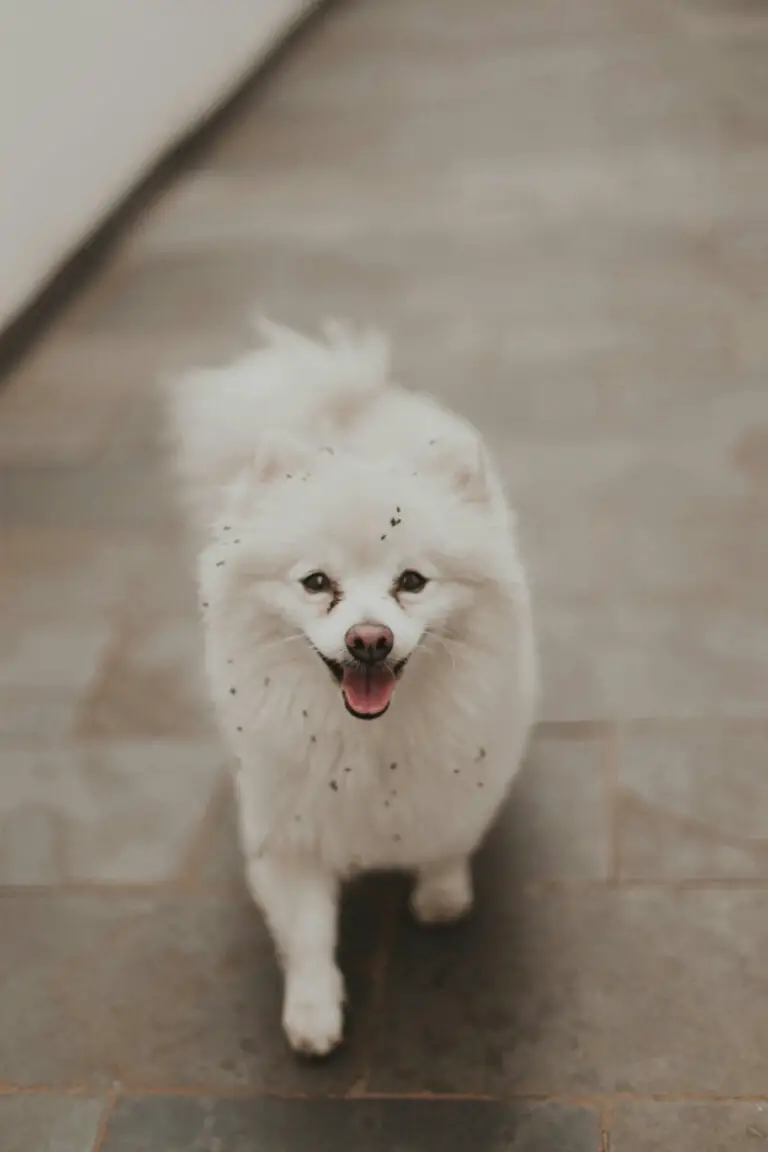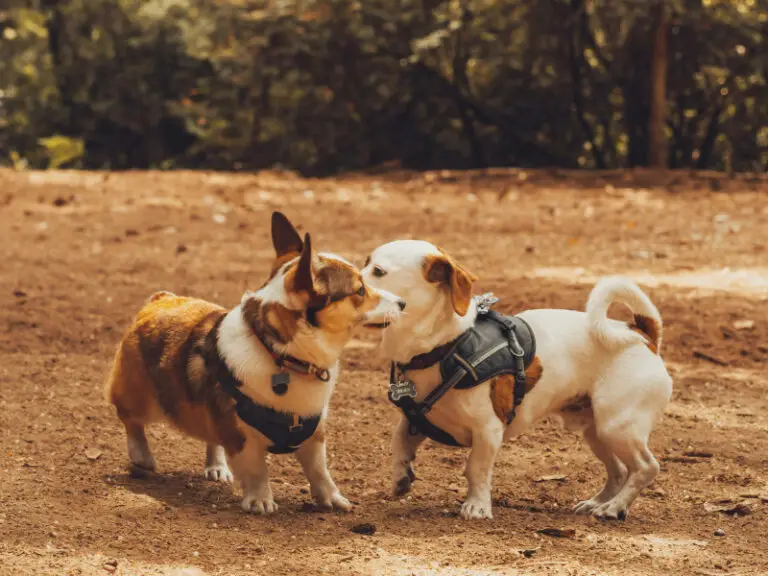When it comes to elegant and powerful dogs, there is no doubt that the Doberman breed is one of the favorites. The Doberman is brave, intelligent, and vigilant; Not for nothing is he known internationally as one of the best protection dogs. But did you know that there is not only one type of Doberman?
If you are a recent admirer of the breed, I invite you to continue reading to find out what all the types of Doberman are (true and false), what characterizes them, what color these specimens can be, and how to know if a Doberman is purebred or not.
Table of Contents
Types of Doberman
Only 2 types of Doberman are officially recognized: the European Doberman and the American Doberman. The European breeding line is recognized by the International Cynological Federation (FCI), whose standard is in force in the countries of Europe, Asia, South America, Central America, and Russia. For its part, the American breeding line is recognized by the American Kennel Club (AKC), whose standard is only applied in North America.
However, in the popular sphere, there are usually 4 types of Doberman Pinscher in total:
- European
- American
- Giant or “king”
- Miniature pinscher
Note. The number in each image corresponds to the number in the list above.
The latter two types are not recognized as true Doberman Pinschers, and in the specific case of the Miniature Pinscher, they are not even close relatives. Let’s see what are the main characteristics and major differences between these dogs…
European Doberman
For many, this is the only true Doberman dog. It is a medium-sized specimen with a powerful constitution. Despite being strong and muscular, the European Doberman also displays traits of nobility and elegance.
Contrary to what many believe, this dog is considered ideal as a pet. Of course, he exhibits a temperamental personality and always has the expression of a determined dog.
The breed was developed in Germany in the 19th century. It is said that the first breeder, a tax collector and hobby dog breeder, dedicated himself to crossing especially biting specimens, which led to the production of a dog useful for surveillance tasks in homes and farms.
Later, the Doberman became an excellent police dog and vermin hunting dog.
The Doberman breed is named after Friederich Louis Dobermann, its first known breeder. In Europe, the name keeps the two “n” at the end.
American Doberman
The American Doberman is a very similar dog to its European counterpart. It is also of medium size, compact build, and square body. But the change in breeding purpose has resulted in a more friendly, elegant, and attractive line.
The European dog’s reputation for bravery, intelligence, and loyalty quickly made it popular in other regions, especially the United States, where careful selective breeding led to the origin and recognition of an American line.
In the United States, this breed is not known as a Dobermann but rather as a Doberman Pinscher.
Giant Doberman (fake)
The Giant Doberman is not a legitimate type of Doberman, but rather a dog that is similar in appearance but much larger in size. Experts say that the Doberman is always a medium dog, so any exceptionally large version is not considered a Doberman at all, at least not a purebred.
The most widely used method of obtaining these large specimens is to cross Dobermans and Great Danes, but some breeders also cross with Rottweilers or other breeds to produce “rare or valuable” giant Dobermans.
As explained by the Doberman Pinscher Club of America (DPAC), the Doberman does not need to be bigger than it is; this dog already has the ideal size as a protection and companion animal.
It is known that the giant specimens are not as fast or maneuverable, and in addition, they are prone to joint and heart health problems.
The giant or “king” Doberman type is actually usually the cross between a Doberman and a Great Dane, i.e. a Doberdane .
Miniature Doberman Pinscher (fake)
Among the so-called types of Doberman, the miniature or mini pinscher is the impostor par excellence. Given its great resemblance, many mistakenly believe that the Miniature Doberman Pinscher was obtained from the standard Doberman, but the truth is that it belongs to a different and much older breed.
It is a bold, fun, and self-confident dog, which was originally bred in Germany to hunt vermin in homes and stables. His lustrous coat and stocky build give him an appearance almost identical to that of the true Doberman.
The FCI recognizes it as a pinscher-schnauzer type dog, while the AKC includes it in the Toy breed group. In both cases, he is described as a companion and house dog.
Genetically, the Miniature Pinscher is very different from the Doberman Pinscher. This may be hard to believe due to their great physical resemblance, but experts do not consider that both dogs are related.
One theory posits that they do share a common ancestor: the German Pinscher; but the truth is that there are many other differences besides size.
They do not have the same temperament or behavior, they belong to different canine groups and were bred for different purposes.
European Doberman vs American Doberman? Comparative table
Many admirers of the breed ask themselves: how can I distinguish a European Doberman from an American one? In general, we talk about physical differences, such as size and musculature; however, the differences run a bit deeper.
Take a look at the following comparative table and discover which are the specific characteristics recognized by the experts…
| European Doberman | American Doberman | |
|---|---|---|
| General description | A working dog, intelligent, sociable, self-confident | Affectionate, loving dog, in tune with the owner’s emotions; intelligent pet and ideal for the family |
| Height | Males (68-71 cm), female (63.5-68 cm) | Males (66-71 cm), female (61-66 cm) |
| Weight | Males (36-74 kg), females (29-38 kg) | Males (34-45 kg), females (27-36 kg) |
| Structure | Thicker, more compact, and muscular body; thicker bone structure |
More refined and slimmer body; elegant and toned structure typical of a show dog |
| Head | Wider with thicker snout and jaw | Slimmer and wedge-shaped, with a slimmer snout and jaw |
| Eyes | Darker brown | Light brown |
| Ears | Are left natural | They are usually cut |
| Neck | Shorter and thicker; has less rise from the shoulder |
Longer and thinner; rises sharply on the shoulder |
| Chest | Bigger and wider | Smaller and narrower |
| Body | Compact and muscular | Long and thin |
| Legs | Thicker and more muscular | Slimmer and more elegant |
| Legs Structure | Larger compact frame | Smaller and more refined structure |
| Brands | Darker | More clear |
| Temperament | He may react with barking and physical intervention if his family is threatened. It responds well to strong steering and is less sensitive to physical correction. |
Calmer and family-focused; less physically protective. Responds well to positive reinforcement and is more sensitive to physical correction. |
In summary, the main difference to consider is that the American Doberman is a more elegant dog with a temperament focused on the family environment, while the European Doberman is a slightly larger and more muscular dog, with the impetus and temperament necessary in a family working-dog.
Just like people, each dog is different and has a unique genetic makeup. That means it’s not uncommon to see variations in temperamental and physical traits. This is true for any Doberman, whether American or European type.
Which of the types of Doberman is better? American Doberman vs European Doberman?
There is some controversy surrounding these two variants of the Doberman breed. Enthusiasts on both sides claim that their kind of Doberman is the best.
For one thing, the AKC, America’s foremost club, judges dogs primarily on their appearance, or “conformation.” In fact, many exhibition show winners have been considered for their exceptional physical characteristics, not so much for temperament.
Considering that puppies that are descended from title winners are highly desirable, the American Doberman Pinscher is often bred based on appearance. As a result, the genetics and character of these dogs may not be consistent.
However, many argue that this has helped create a much more elegant Doberman, family-friendly in nature, and easier to handle for novice owners.
Proponents of the European Doberman argue that breeding lines developed strictly as pets, or for a show, have made the American dog much more timid, sensitive, fragile, and less impulsive than the original breed.
In the case of the European Dobermann, the personality and general disposition of the dogs tend to be much more standardized, especially since each of them must pass a temperament test before being approved for breeding.
Passing such a test requires the dog to maintain a certain level of confidence in many different situations, and to be able to physically intervene to protect its owner.
In response, many proponents of the American Doberman are of the opinion that generations of European breeding have developed very large, clumsy, and unwieldy alpha dogs, except for professional handlers. In essence, they describe him as a dog that is out of reach for the average owner.
So which of the two is better? There is no one better than another. The answer will always depend on the purpose and personal taste of each owner.
Colors and Markings: What color can a Doberman be?
Almost everyone visualizes the Doberman as a black dog with tan markings, but although this is the most popular and recognized color, the truth is that Dobermans can be born with other colors.
The breed is said to exhibit 7 colors in total:
- Black and rust
- Red and rust
- Blue and rust
- Fawn (Isabela) and rust
- Black
- White
- Albino
Not all are accepted by breed standards, and specifically, the existence of the albino color is still a matter of discussion.
1. Black and rust
(Black, black and tan, black and brown)
Accepted by European and American breed standards.
The black and rust Doberman is the most widely seen color combination. These specimens are the most traditional. They are the ones that commonly represent the Doberman breed in movies and television.
Although most Dobermans do not do well in extreme temperature climates, black Dobermans are known to be more likely to experience problems with heat and direct sun exposure.
2. Red and rust
(Red, brown, chocolate)
Accepted by European and American breed standards.
This is the second most common color in Doberman Pinschers. The color of the coat can vary from a light coppery tone to brownish-red or dark chocolate. Some owners say that red Dobermans are a bit more cheerful and less territorial.
3. Blue and rust
(Blue, gray, silver)
Accepted only by the American standard.
The blue Doberman is a bit rarer than its black and red counterparts. This color is not observed in the European dog, and despite being approved by the AKC, it can sometimes be a reason for disqualification in some of its exhibitions. That is why many breeders avoid the blue color, hence it is rare.
According to experts, these dogs are not actually blue, but diluted black. They are said to be prone to color dilution alopecia, a genetic skin condition that can cause hair thinning and loss, dry skin, and itchiness.
4. Fawn and Rust
(Fawn, Isabela, light brown)
Accepted only by the American standard.
Fawn-colored Dobermans are the least common of the 4 standard colors. Breeders tend to avoid this color because, as with the blue Doberman, it is often a reason for disqualification at events. This is considered a rare and unpopular type of Doberman.
The color fawn is technically a diluted red. It is also associated with an increased risk of skin and coat health problems (alopecia, ingrown hairs, skin infections).
5. All black
It is not accepted by either of the two standards.
Black Dobermans are the product of a genetic quirk that causes excessive pigmentation (melanin) to be produced, making them appear completely black. In general, they still have the typical markings of the breed, but in a dark tone that is much more difficult to distinguish.
Since they are not accepted in Europe or America, these dogs never compete in shows or competitions. Breeders generally avoid any type of breeding that might produce them.
Some believe that black Dobermans are the result of inbreeding, hence why they are more prone to certain health problems. There is still some debate about it.
6. White or partial albino
(Cream, ivory)
It is not accepted by either of the two standards.
The white Doberman is considered a “leucistic” specimen, which means that it is not completely albino. It does produce melanin pigmentation, but this is very limited. The coat is very light in color, but not completely white. The marking area is an even lighter shade of white.
These specimens have blue eyes, with a pink nose, lips, and eye rims. In general, they are very rare and are not accepted in any setting.
White Dobermans can suffer from vision problems, including increased photosensitivity; it is common for them to close their eyes when exposed to the sun. They can also get sunburned and are much more prone to cancerous growths and other skin problems.
It may interest you:
- 11 Types of Tumors, Lumps and Cysts Common in Dogs
- Corneal Ulcer in Dogs – 7 Causes, Types, Symptoms, Treatment and More
7. Albino
There is some debate about the existence of the albino Doberman pinscher, but some experts say obtaining it is theoretically possible. Lacking the pigmentation gene, this would be a significantly whiter specimen than the white or cream Doberman Pinscher.
It is common for a white specimen to be confused with an albino, but apparently, there is a way to tell them apart. The white Doberman will have blue eyes, while the albino Doberman will have pink eyes.
In theory, these dogs should also suffer from health problems linked to photosensitivity, sunburn, and cancerous tumors.
According to the European FCI standard, a Doberman Pinscher can only be 2 colors: black or red/brown with rust-colored markings. The American standard recognizes two additional colors: blue and fawn, likewise with rust-tone or tan markings.
Doberman markings
In addition to the main coat color, this breed is known for its prominent rust or tan markings. All variations have these traditional markings. It should be noted that some American-type Dobermans have a small white patch on the chest area.
The AKC standard dictates that the American Doberman must have well-defined rust-colored markings. These should appear above each eye, on the muzzle, cheeks, throat, chest, all four legs, and feet, as well as a patch just below the tail. In case of presenting the white mark on the chest, it should not exceed the size of ½ square inch.
For its part, the FCI indicates that the tan markings must be clearly defined and located on the snout, the cheeks, on the upper part of each eyebrow, on the throat, two points on the chest, on the pasterns, metatarsals, and feet. , inner thighs, perineal region, and iliac protuberances. They are essentially the same as the American Hound, except for the small white patch on the chest area.



